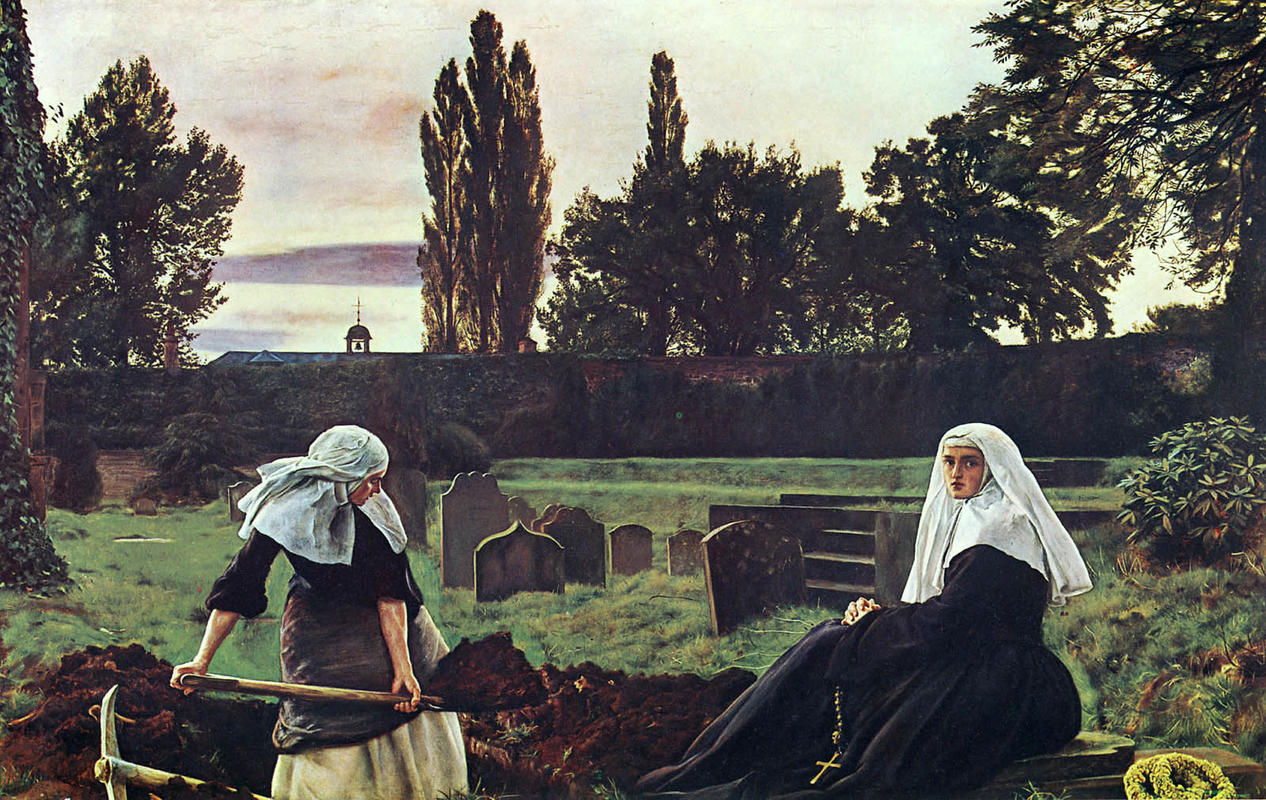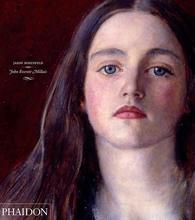More about The Vale of Rest
- All
- Info
- Shop

Contributor
My guy John Everett Millais was all about the ladies. But not exactly in the way you’d expect a man to be in the mid 1850s.
Homie was mad talented from an early age. But he wasn’t about that fancy Victorian style of art. So he joined up with two other like-minded artists William Holman Hunt and Dante Gabriel Rossetti—WHH & DGR if ya nasty—and formed the Pre-Raphaelites. No, not Hebrew Israelites, Pre-Raphaelites.
These three rebel amigos teamed up in 1848 like the Avengers, and their goal was to save the art game from itself. Their name is a reference to Raphael and the prevalence his art had on the style of the time, which romanticized nobility and an idealized a particular type of lifestyle. They weren’t about none of that. One of the ways the Pre-Raphaelites’ decided to combat that was by putting women as the center of the stories they wanted to tell on the canvas. Just not in the way that a young cynic like yourself would think. So no, no Anime Tiddies. They wanted to change the narrative of what women could be seen as in the public eye. Shy, prude, and unaware? Nah, fam. The Pre-Raphaelites presented women in their authenticity, whether that be as mothers, in lust (not in an Anime Tiddie way), or in the case of The Vale of Rest, a couple of Nuns confronting their mortality while digging a grave.
There’s some really dope stuff going on in The Vale of Rest. It’s ominous, peaceful, and a little existential. When you look at this picture, you might hear the breeze of the autumn air, the consistency of the chunks of dirt separating from the Earth, and maybe some slightly elevated breathing. The setting of this painting both in the sunset and in the thinning trees conveys themes like running out of time and the inevitability of death.
But enough, I’m sure you can decipher what’s going on in this painting. The reason why it’s an interesting piece lies squarely on the shoulders of its subjects and its themes. The Vale of Rest perfectly embodies the Pre-Raphaelites’ mission as it places these two women in the middle of a moment that feels genuine, rather than fabricating a maybe prettier scene that leaves the raw emotion on the cutting room floor. That’s powerful. Especially for Victorian England. And I have no doubt that it helped change the public perception of what women could be like in their everyday lives.
Sources
- Britannica. “Sir John Everett Millais, 1st Baronet.” Accessed July 28th, 2019. https://www.britannica.com/biography/Sir-John-Everett-Millais-1st-Baron…
- Dr. Rebecca Jeffrey Easby. "Sir John Everett Millais, The Vale of Rest," in Smarthistory. August 9, 2015, accessed July 26th, 2019. https://smarthistory.org/millais-the-vale-of-rest/
- Sebag-Montefiore, Clarissa.“Sensuality, lust and passion: how the Pre-Raphaelites changed the way the world sees women” The Guardian. December 18, 2018. https://www.theguardian.com/artanddesign/2018/dec/19/sensuality-lust-an…
Featured Content
Here is what Wikipedia says about The Vale of Rest
The Vale of Rest (1858–1859) is a painting by the English Pre-Raphaelite artist John Everett Millais. It depicts a twilight graveyard scene and prominently features two nuns.
Check out the full Wikipedia article about The Vale of Rest













